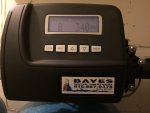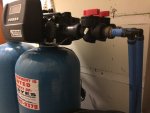- Jun 7, 2016
- 78
- Pool Size
- 32000
- Surface
- Plaster
- Chlorine
- Salt Water Generator
- SWG Type
- CircuPool RJ-60
I've been searching for and reading threads on using filters for fill water and many seem to have conflicting information; iron in particular, some say the filters don't do anything to help "soluble" iron, only visible, which the pool filter should be able to pick up anyhow, others say they have good results filtering the fill water. I don't want to waste money on expensive disposable filters, so I'm hoping for some clarification; even if these filters don't remove all metals that can cause discoloration or staining, are they still beneficial in other ways, or a waste of money? I'm considering installing some in-line filters on the line that runs to the pool-house (which is typically what I use for fill water); I figure in-line would be more cost-effective than the hose attachment versions, but don't want to waste the money if it's not really helping. That line does go through our softener (which is under-powered, but helps), so it's already getting some filtering there. I do fill occasionally with the non-softened (and unfiltered) water depending on the hardness level in the pool, but the well water is so hard I only top it off with the un-softened water maybe 20% of the time.
We're on well; here's the ballpark results from a test we did last year:
Hardness: 1000+
Chlorine: 0.25
Alkalinity: 200
pH: 9
Nitrite: 0.25
Nitrate: 2.5
Copper: 0.6
Iron: 1
We're on well; here's the ballpark results from a test we did last year:
Hardness: 1000+
Chlorine: 0.25
Alkalinity: 200
pH: 9
Nitrite: 0.25
Nitrate: 2.5
Copper: 0.6
Iron: 1



